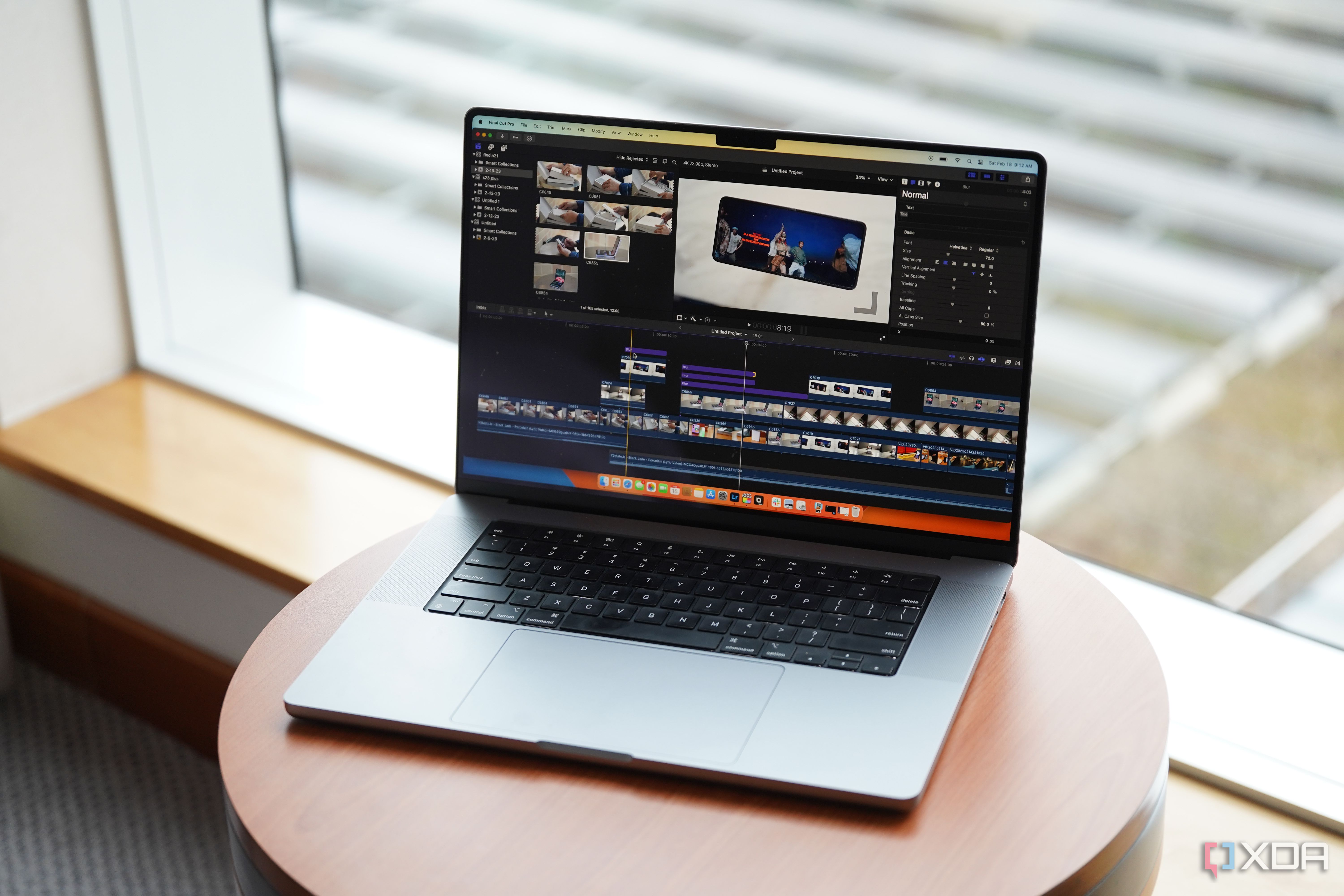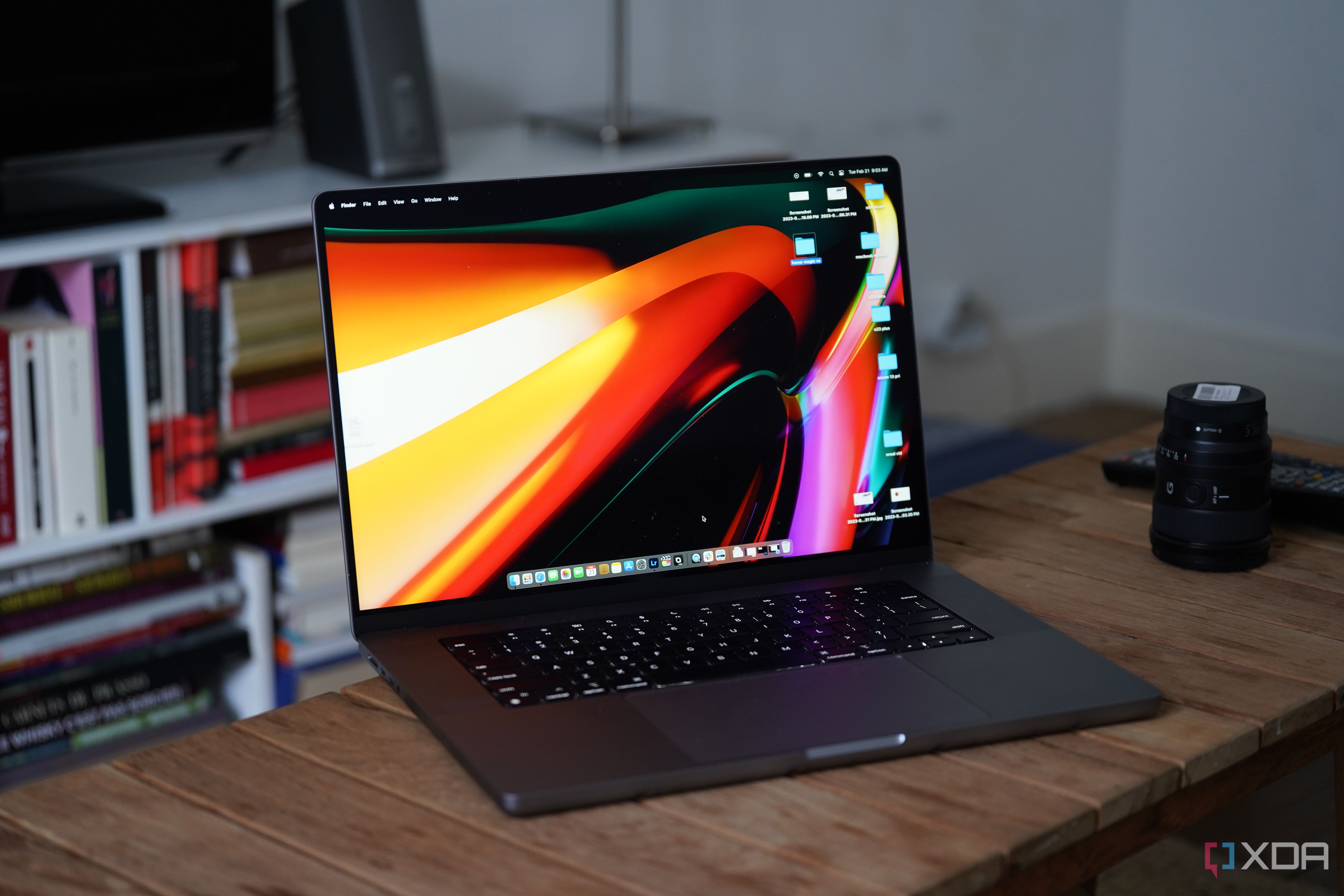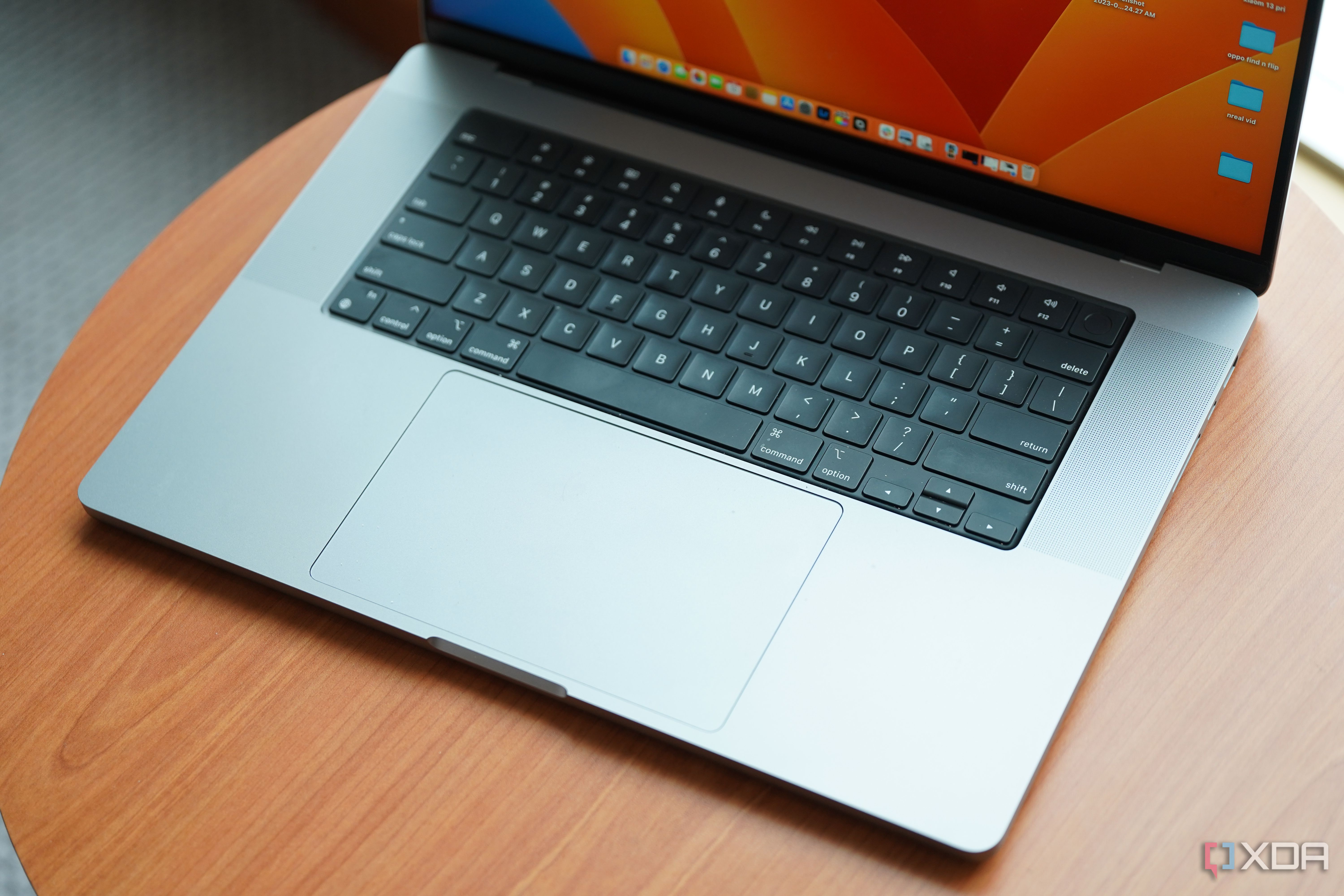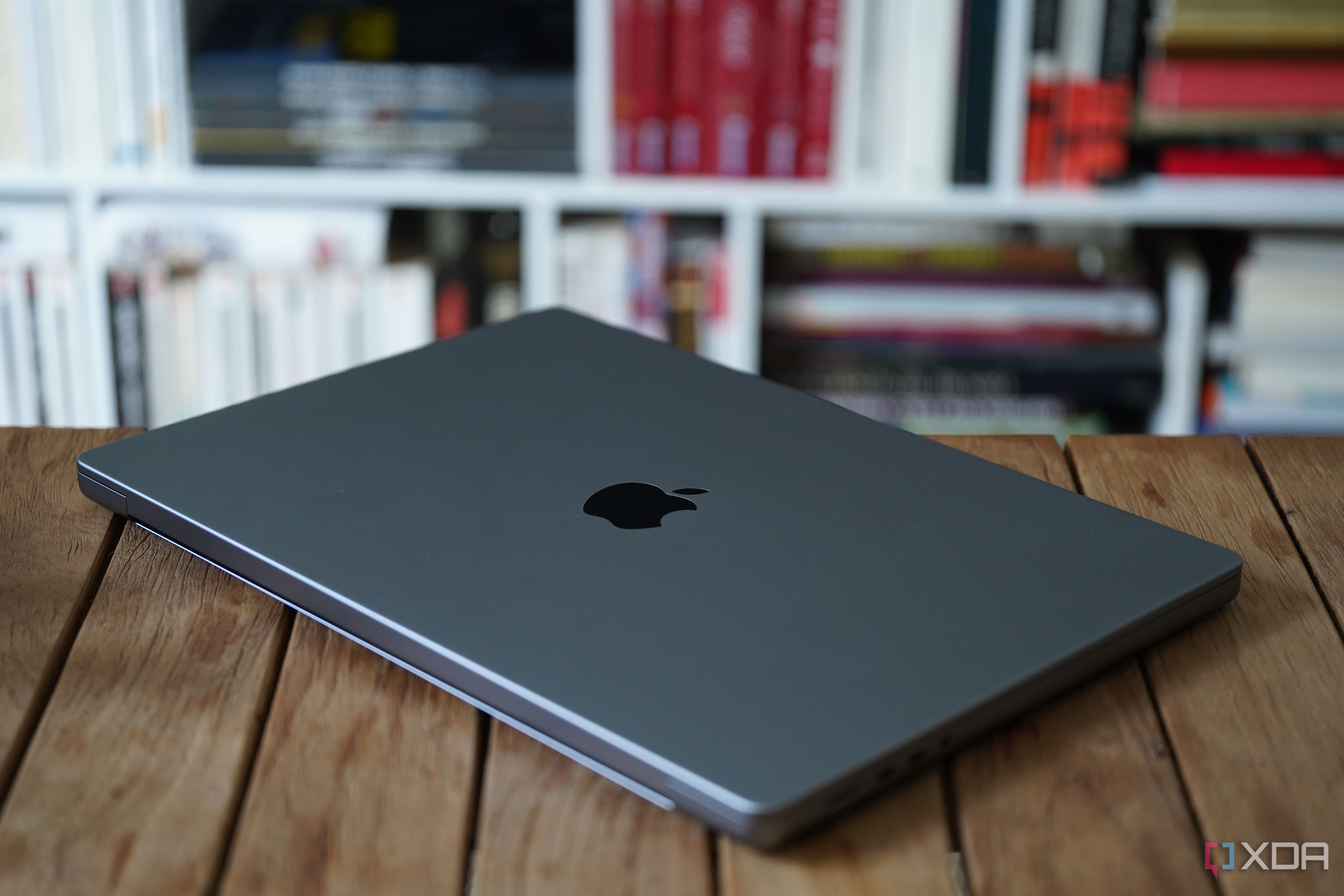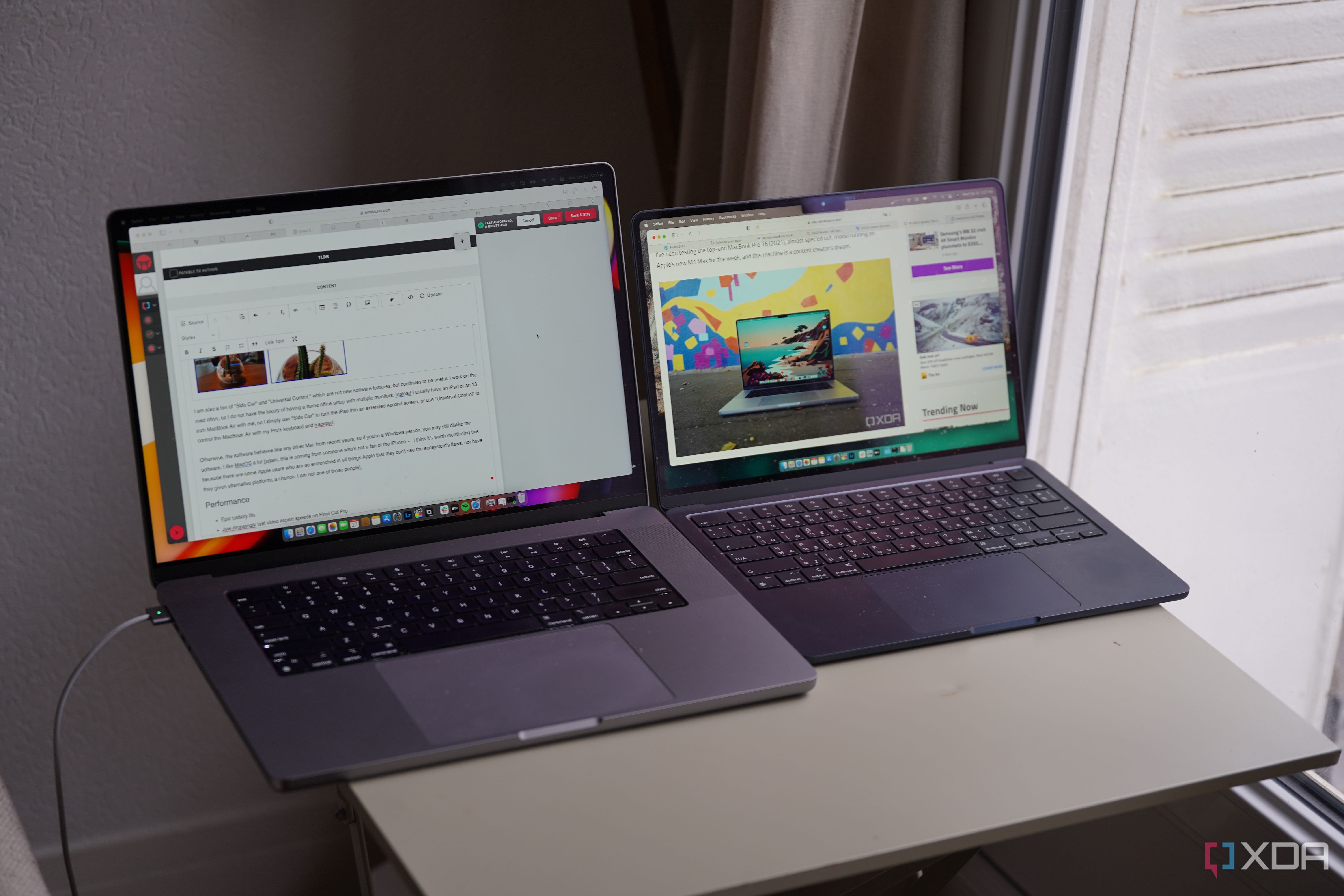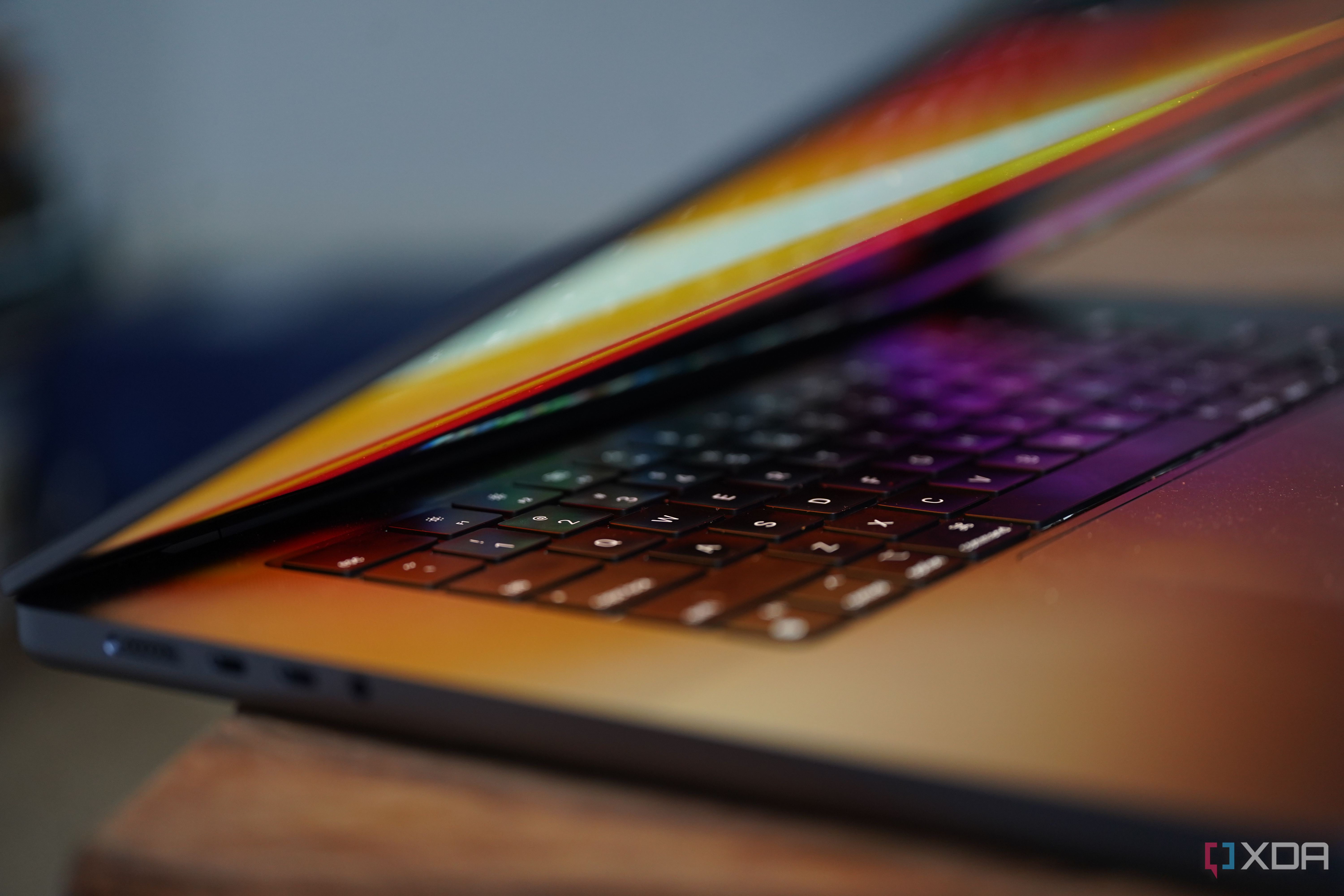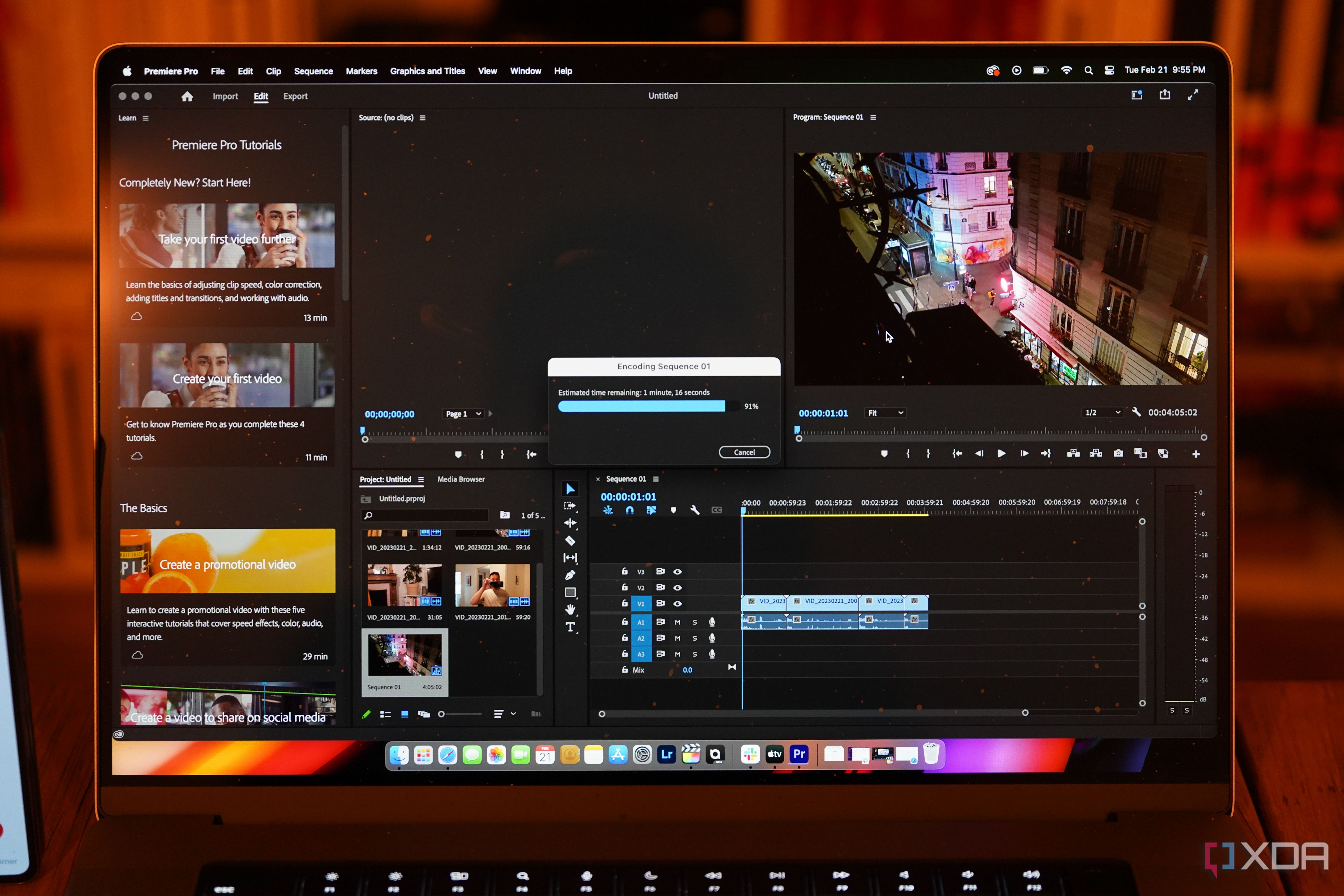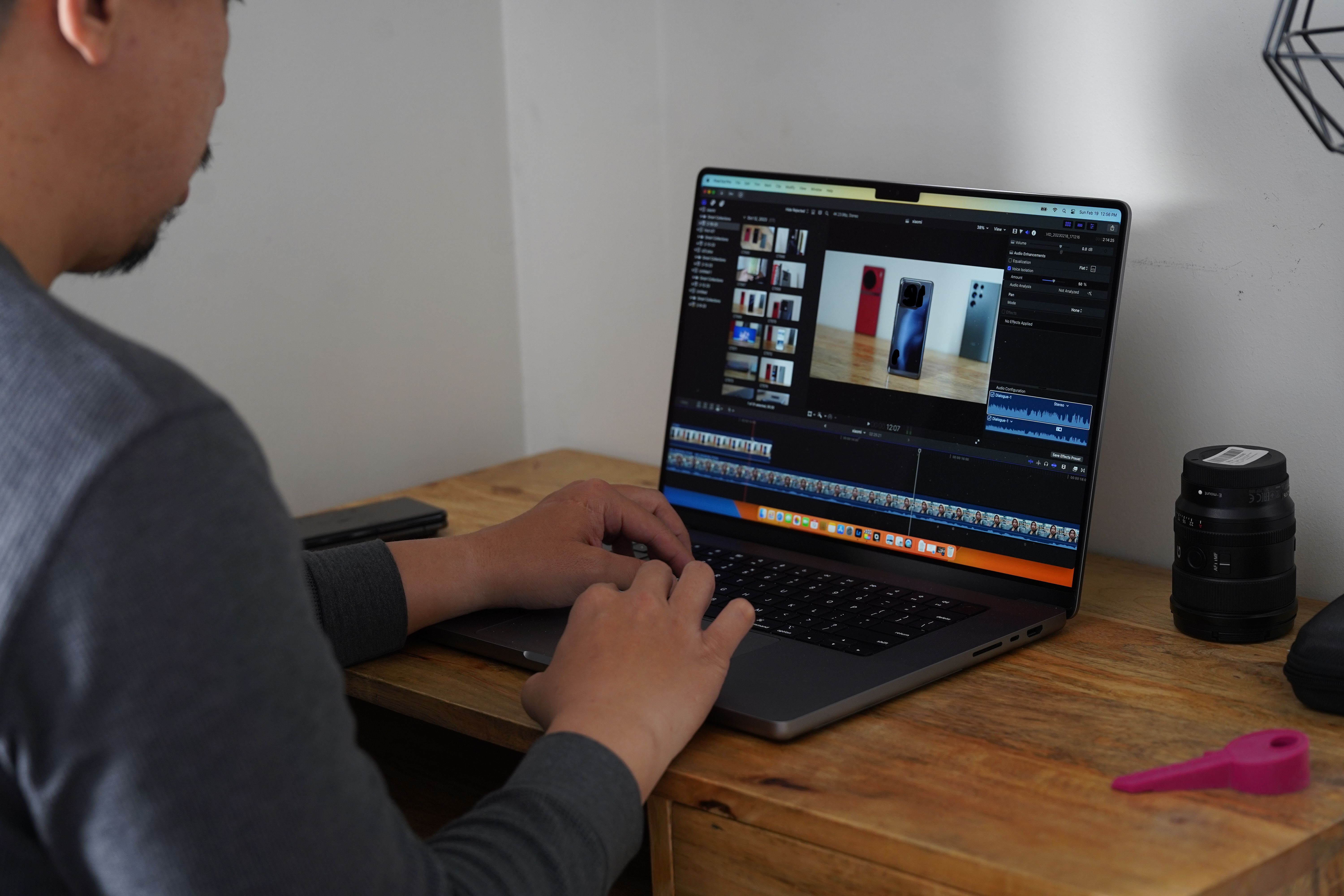Quick Links
Except for the notch and perhaps the weight, nobody had anything bad to say about Apple's 2021 16-inch MacBook Pro running on Apple's M1 Max silicon. It was fast, powerful, efficient, and even brought back all the fan-favorite features Apple had previously stripped away, such as slots for HDMI and SD cards. Even for someone like me who's quite vocally anti-Apple when it comes to smartphones, I couldn't deny the M1 Max MacBook Pro's greatness. After I returned my review unit to Apple, I purchased my own the next day, and it's been my main work machine since. It may be the happiest I've ever been with a tech purchase in half a decade.
The new 2023 MacBook Pro brings all of that back in the same package but with Apple's latest M2 Pro or Max chips. There are slight upgrades, like newer HDMI and Wi-Fi standards, but the machines are almost purely processor bumps. Everything else mostly stayed the same, from the Mini-LED displays to the port options.
I've been testing a nearly spec'd out M2 Max model for the past two weeks, and while the machine is more powerful compared to the M1 Max model, what's more noticeable is the better efficiency. Battery life is jaw-droppingly good, and no matter what I did, I could not get the fan to start up. Still, you don't have to upgrade to this if you already own the M1 Max version. The M1 Max was overkill for most people two years ago and shifted the paradigm regarding what was possible from a portable workstation for creatives, and it remains so today.
Instead, this new 2023 MacBook Pro 16 is meant to appeal to those with older Intel-powered MacBooks or other great laptops. If you fit in that camp and are ready to pay the hefty sum Apple is asking, prepare to have your mind blown by the new best Mac available.
About this review: This review was written after two weeks using a 16-inch M2 Max MacBook Pro provided by Apple's Hong Kong branch. The company did not have input in this article.
Apple's 2023 MacBook also comes in a 14-inch size and, like the 16-inch model, can be powered by either M2 Pro or M2 Max. I only got hands-on time with the 16-inch M2 Max model, so this review will focus on that particular model.

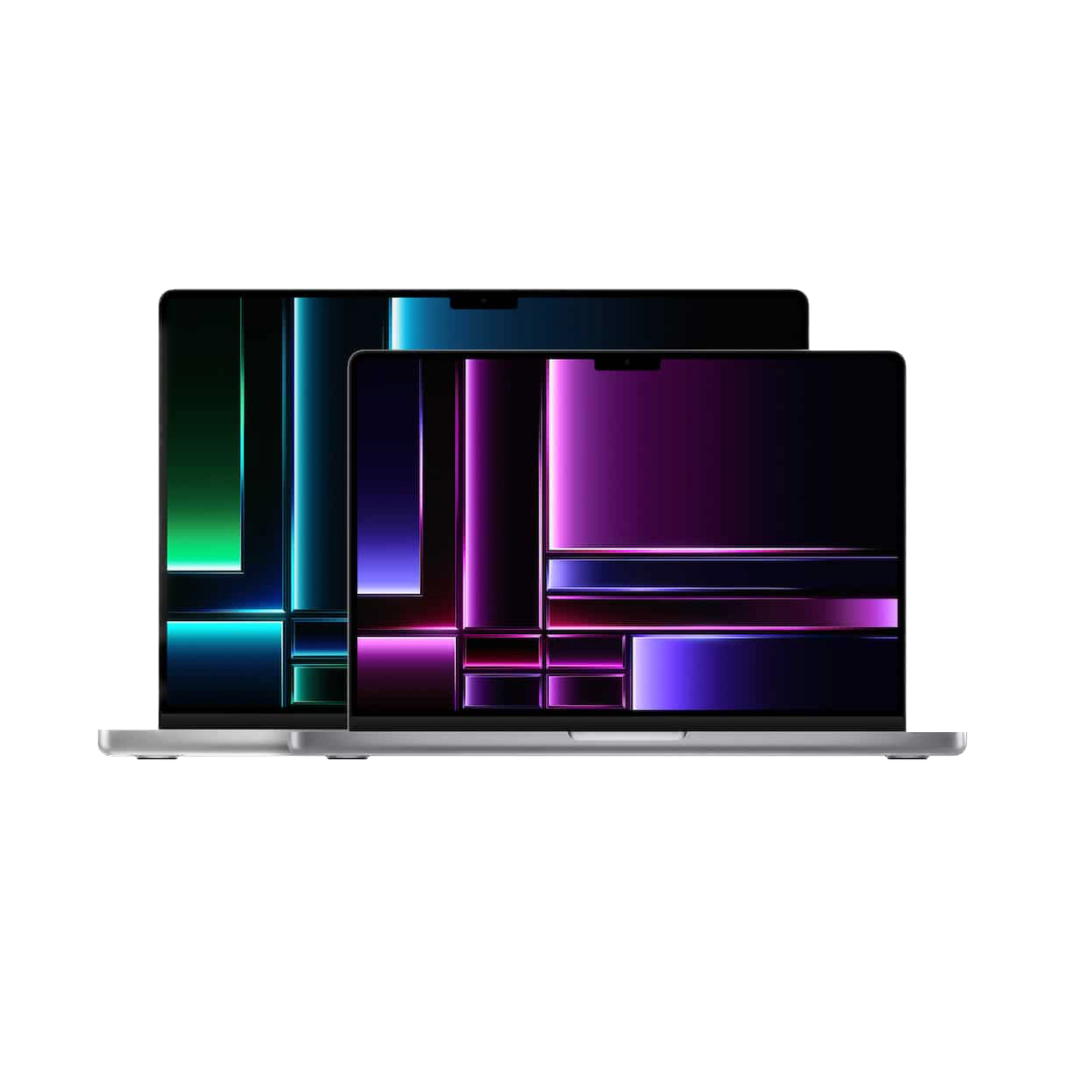
Apple MacBook Pro (M2, 2023)
Apple's 2023 MacBook Pros come in either 14- or 16-inch screen sizes and is powered by the M2 Pro or M2 Max silicon. It's mostly a spec bump over the 2021 version, but if you don't mind paying a premium, it's a great device.
- Brand
- Apple
- Storage
- 512GB to 8TB
- CPU
- Apple M2 Pro/M2 Max
- Memory
- 16GB/32GB/64GB/96GB
- Operating System
- MacOS Ventura 13.2
- Battery
- 14-inch: 70Wh/16-inch: 100 Wh
- Ports
- 3x USB-C (Thunderbolt 4), 1x HDMI, 1x headphone jack, 1x MagSafe, 1x SD card slot
- Camera
- 1080p webcam
- Display (Size, Resolution)
- 14-inch: 3024 x 1964 resolution Liquid Retina XDR/ 16-inch:3456 x 2236 Liquid Retina XDR
- Weight
- 14-inch: 3.2 pounds/16-inch: 4.8 pounds
- GPU
- Up to 38-core GPU (M2 Max)
- Price
- Starts at $1,999
- Great performance that doesn't suffer when on battery power
- Epic battery life
- Excellent screen and speakers
- Heavy
- Expensive
- Ugly notch
Apple MacBook Pro 16 (2023, M2 Max): Price and availability
- The 16-inch model with M2 Max starts at $3,499 but can jump as high as $6,499
This new MacBook Pro is a beast of a machine, but with all that power comes a high price tag. The 16-inch model with M2 Max starts at $3,499 for 32GB RAM and 1TB of storage. Max out the specs to 96GB RAM and 8TB of storage and the price bumps up to $6,499. The model I'm testing has 96GB of RAM with 4TB of storage and costs $5,499.
If you stick with 16-inch but go with M2 Pro, you can get a machine starting at $2,499. Drop to 14-inch and go with M2 Pro and the price starts at $1,999. While I'm sure these machines are perfectly capable for many people, they have significantly less storage, RAM, and GPU cores than the model I'm testing. For this particular review, you should read it assuming it's a $3,499 machine, not a $1,999 one.
All these models are available worldwide anywhere that sells Apple products, but you'll get the most configurations directly from Apple.
Design and hardware: All about the silicon
- Exact same body as the 2021 16-inch machine
- Ports got slight upgrades
- Mini-LED display looks great
Tipping the scales at nearly 4.5 pounds and measuring 0.66 inches thick, the 2023 MacBook Pro 16 is an absolute unit compared to most laptops you'll see in the wild. It has the usual Apple flourishes like a large and precise trackpad, spacious keyboard with decent key travel, two large speaker grills, and a lid you can open with one hand. The laptop's weight is evenly distributed, and every part of the construction feels solid; there's no flex or give anywhere.
The laptop has lots of ports, particularly for an Apple product. There's an HDMI port with a USB-C and SD card slot on the right, along with two more USB-C ports, a headphone jack, and MagSafe magnetic port on the left. All three USB-C ports are Thunderbolt 4, so you can charge the laptop with any of them if you don't want to use MagSafe.
While the number of ports, and their positions, remain unchanged, they got slight upgrades. The HDMI port now supports monitors (or TVs) at up to 4K resolution at 240Hz refresh rate or an 8K display up to 60Hz. The port also supports variable refresh rates. In total, you can connect up to four external displays (using HDMI and three USB-C ports) at the same time. The SD card slot's transfer speeds seem to have been upgraded, though I had no confirmation from Apple. But I could transfer images at 222 MB/s and 196 MB/s for read and write speeds, respectively.
My model is in the Silver colorway, but there's also Space Gray, as usual. If you've seen the 2021 16-inch MacBook Pro, you'll know what the 2023 version looks like.
Display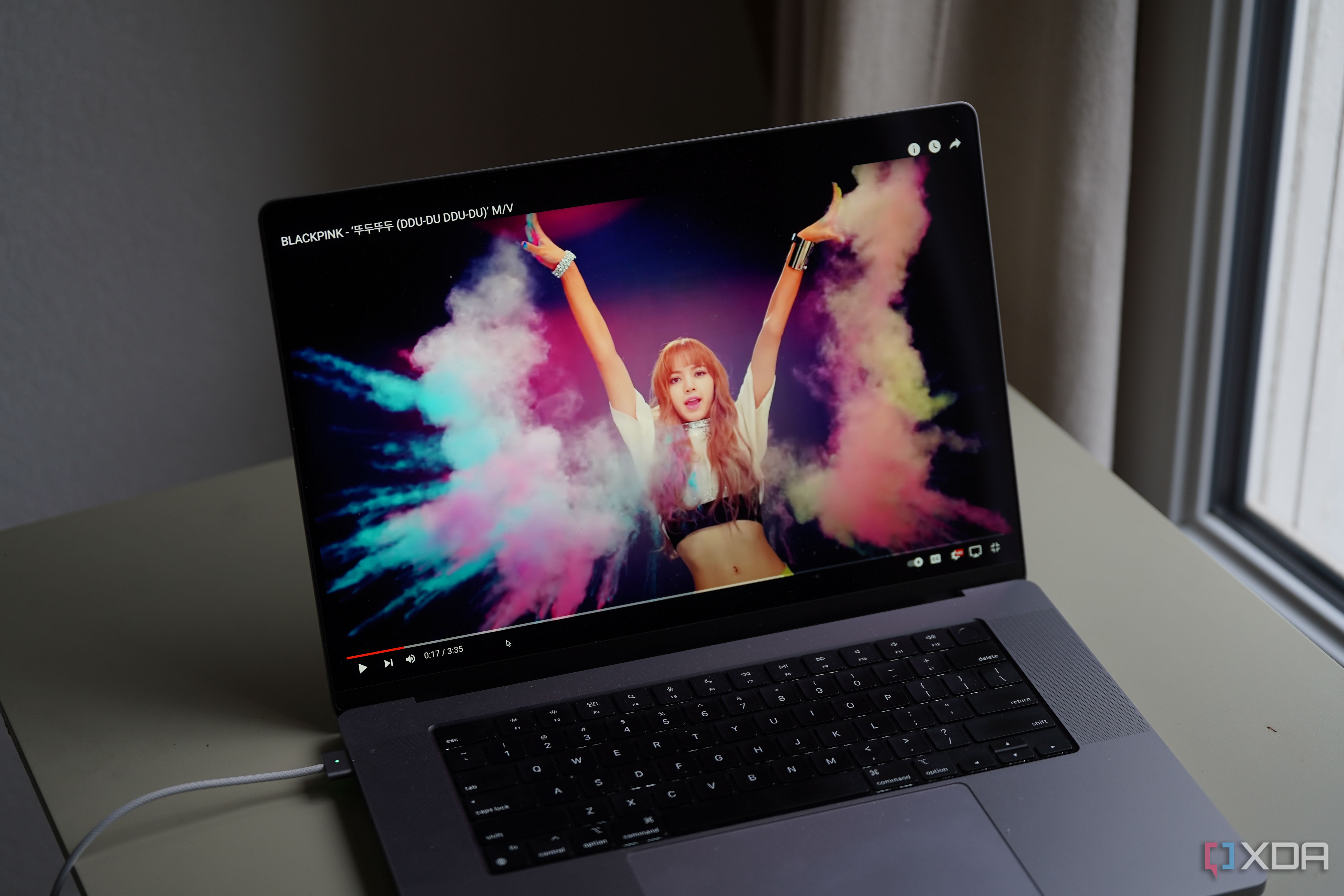
The 16.2-inch Mini LED display, which Apple calls a Liquid Retina XDR display, is identical to the one on the 2021 model, and that's just fine — although I must stress I'm no display expert. It's a great looking panel to my layman eyes, with 3456 x 2234 resolution, 120Hz refresh rate, and a sustained maximum brightness of 500 nits and well over 1,000 nits for HDR content. The blacks aren't as deep as an OLED panel, but they're deep enough and better than many typical LCD panels. I do not have the professional tools to measure color gamut, but I checked with several peers who focus more on display reviews, and they say this laptop's display is very well-calibrated out of the box and covers 100% of P3 and SRGB color gamut.
As for that notch, yeah, it's still an eyesore, but it doesn't get in the way of your work. It's also hidden by digital bezels in most applications. I'm just disappointed it still houses just a 1080p webcam instead of Face ID (right now you still use Touch ID, located in the power button in the upper right part of the keyboard). But otherwise, if you're going into using this MacBook for creative work, you won't have any complaints.
Processor and memory
The model I'm testing comes with the M2 Max chip and other maxed-out specs, with a 12-core CPU, 38-core GPU, 96GB of unified memory, and 4TB of storage. According to Apple, the M2 Max has a 20% faster CPU and a 30% faster GPU than the M1 Max. But as I said, the M1 Max was already a beast of a machine for my workflow as a semi-professional video content creator. So the M2 Max merely renders and exports videos at even faster speeds. I'll talk about benchmark and video export numbers in the performance section.
Battery and charging
Finally, we've come to the battery. The 99.6Wh battery remains unchanged, as is the 140W charging brick that comes with the laptop. If I'm not using the laptop, the charger can fill it up from 0 to 100 in just over 70 minutes. It was a major hassle to do that test because the battery life in this laptop was so good that I had to go out of my way to drain the battery. More about battery life in the performance section.
Software: Some new useful features added to typical MacOS
- Runs on macOS Ventura 13.2
- Sidecar and Universal Control are very useful for on-the-go work
The MacBook Pro 16 comes with macOS Ventura version 13.2, with the biggest visual change coming in a redesigned setting page that makes it look more in line with iPadOS's visual identity. You have more minimal, flat icons, rounded corners, and toggles that seem as much made for fingers (or Apple Pencil) as a mouse arrow (but no, this MacBook doesn't support touchscreen).
Another new feature I like is the ability to isolate a subject in a photo from the background quickly. This feature appeared on iOS 16 first, and it's been quite helpful for me as I design my own YouTube thumbnails. Cutting a subject out from a photo used to require quite a bit of work in dedicated photo editing software. Now, it's a matter of right-clicking and selecting "copy subject." And the cutout works well most of the time, like how the MacBook isolated the small cactus plant and some of its little spikes in the photos below.
I am also a fan of Sidecar and Universal Control, which are not new but continue to be helpful. I work on the road often, so I don't have the luxury of a home office setup with multiple monitors. Instead, I usually have an iPad or a 13-inch MacBook Air with me, so I use Sidecar to turn the iPad into an extended second screen or use Universal Control to control the MacBook Air with my Pro's keyboard and trackpad. In the photo below, I am using the larger MacBook's trackpad to control the action on the smaller MacBook.
Otherwise, the software behaves like any other Mac from recent years. If you're a Windows person, you may still dislike the software. However, even as somebody who's not a fan of the iPhone, I like macOS a lot.
Performance: A video content creator's dream
- Epic battery life
- Jaw-droppingly fast video export speeds on Final Cut Pro
- M2 Max is so efficient I can't get the fan to turn on
I am what I would describe as a multimedia tech journalist or content creator. In addition to writing articles such as this one, I also take product shots of products I test and make videos about these products, sometimes for XDA and sometimes for my YouTube channel. I'm also somewhat of a digital nomad, so I usually work out of coffee shops with laptops on battery power.
My typical work day sees me with at least 8-10 Safari tabs open, with Slack running in the background all day. I'll have Spotify playing music, too, if I'm writing. I also frequently have to transfer photos and video clips I've shot from my camera's SD card over to the MacBook, so the presence of a dedicated card slot is a significant upgrade over the 2019 MacBook, which required me to use a dongle. Sometimes I get lazy and don't want to move the files all the way over to the computer, so I just edit the video clips in Final Cut Pro directly off the SD card. The data transfer speeds are fast enough that I can do so and still scrub through my timeline without lag.
As a semi-creative professional, the M1 Max was already more than powerful enough, and the M2 Max is just the cherry on top. People in more creative fields might think differently, but in Final Cut Pro, I can put together a 10-minute 4K video with color-graded footage and multiple layers, and I can scrub through the timeline in "quality" preview mode without ever seeing a slowdown. I haven't seen that dreaded spinning wheel from doom older Macs in all my time with this machine.
I don't usually shoot in 8K, but for the sake of testing, I loaded 8K footage into Final Cut Pro and Adobe Premiere Pro. It's the same deal: I can scroll through the timeline without stuttering or lag.
How about video export times? They're insanely fast if you use a Mac-optimized Final Cut Pro (and still quite fast in Adobe Premier Pro). I ran a series of video export tests and used a stopwatch to track times. Below are the results.
|
Video export times |
Final Cut Pro (plugged in) |
Final Cut Pro (battery power) |
Adobe Premiere Pro (plugged in) |
Adobe Premiere Pro (battery power) |
|
12-minute, multi-layered 4K/30 FPS video |
3:15 |
3:27 |
6:52 |
7:01 |
|
4-minute, single layer 8K/24 FPS video |
1:37 |
1:18 (not a typo) |
13:47 |
14:13 |
If I'm pushing out a shorter two-minute video, the export time is almost instant. Compared to the M1 Max, the M2 Max machine only slightly improves Final Cut Pro's exports but makes huge gains in Adobe's less-optimized software. The M1 Max finished the 8K/24 FPS video export at 1:40 plugged in, so there is just a three-second difference on the M2 Max, but the footage took over 21 minutes in Adobe Premiere Pro on the M1 Max — about seven minutes longer.
I am not a benchmark guy, but I ran the usual tests, including Geekbench 6, CrossMark, and Cinebench R23, and these numbers are impressive compared to most Intel machines. Also, when I did these benchmarks or video export tests, the fan never kicked in once.
Geekbench 6 was released to the public earlier this month, so we don't have any comparison numbers just yet.
|
Benchmark scores |
Geekbench 6 |
CrossMark |
Cinebench R23 |
|
MacBook Pro 16 (2023, M2 Max) |
2,770 single-Core; 14,451 Multi-Core |
1876/1609/2437/1356 |
1,645 Single-Core; 14,751 Multi-Core |
Two more areas where this MacBook Pro excel is the microphone and speakers. There are three microphones and a six-speaker setup; both are among the best in any laptop I've tested.
Battery life
Even though this 2023 model has the same battery size as the 2021 model, the M2 Max's superior efficiency has improved battery life even more. If you're using this to surf the web, type words, and watch YouTube, it can easily last an 8-10 hour workday with half the battery to spare. If you're streaming video, a two-hour Netflix movie at 50% brightness knocked only 8% off the battery. A two-hour editing session in Final Cut Pro only took about 15% battery. Simply put, this machine can last a full eight-hour workday for just about everyone. If you're doing graphics work, the battery should squeak by. If you're writing articles or doing social media posts? You can probably go two and half full work days before needing to plug the laptop in.
Seeing as most people aren't making videos or creating 3D graphics, it's safe to say this is a multi-day laptop, one you can bring on a weekend trip and not worry about bringing a charger.
Should you buy the MacBook Pro 16 (2023, M2 Max)?
You should buy the MacBook Pro 16 M2 Max if:
- You create videos or graphics and want a portable machine that can handle all your work
- You need a computer powerful enough to handle all your needs, not just today, but years down the line
- You are annoyed that your Intel-powered MacBook Pro is running warm or slow
You should not buy the MacBook Pro 16 M2 Max if:
- You already have the 2021 M1 Max 16-inch MacBook Pro
- You use your laptops just for reading/typing words and streaming videos
- If you don't have the budget for it
The M2 Max MacBook Pro took what was already a beloved laptop and upgraded it for 2023 and beyond. Sure, the M1 Max is more than powerful enough today, so consider the M2 Max as future-proofing. Apple's silicon is so far ahead of the game, particularly if you're using Apple's software, that this is just Apple lapping the competition at this point. The M2 Max doesn't bring jaw-dropping leaps over the M1 Max, but its improved efficiency is very welcome. I can have multiple video editing sessions and not worry about plugging the laptop in.
The thing is, this laptop is too powerful for me, and I already do more than the average person because I edit 4K videos regularly. But my videos don't push the capabilities of this machine — I can't even get the fan to turn on! This M2 Max MacBook Pro is for true creative professionals, like a 3D graphic artist, or someone who shoots 8K footage outputting to an 8K external monitor. I'm sure I can downgrade to a M2 Pro and not feel like I am missing anything. And for those whose computer usage consists mostly of reading and typing words can even drop another tier to the M2. This is a true professional laptop, and my goal is to one day improve my video skills enough to push the machine enough to hear the fan.

Apple MacBook Pro (M2, 2023)
Apple's 2023 MacBook Pros come in either 14- or 16-inch screen sizes and is powered by the M2 Pro or M2 Max silicon. It's mostly a spec bump over the 2021 version, but if you don't mind paying a premium, it's a great device.
- Performance barely dips when running on battery power
- Epic battery life
- Excellent screen and speakers
- Heavy
- Pricey
- Notch

